Choosing The Right Parts for Your PC Build
Once you finally chose your use case and budget, what you want to do next is to choose the right parts that would meet your needs for you PC build. Here are the key components and what to consider when choosing your parts for your build.
CPU/Processor
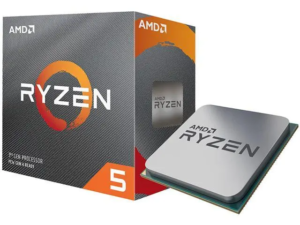
Photo from DynaQuest PC
The central processing unit (CPU) is the brain of a personal computer. It executes instructions and performs calculations and is responsible for the computer’s overall system performance and responsiveness. There are two companies that currently manufactures x86 processors, which are AMD and Intel.
AMD has its own Ryzen line of x86-based processors, which include the Ryzen 3, Ryzen 5, Ryzen 7, and Ryzen 9 processors. All of AMD’s Ryzen processors either use the AM4 socket or the more recent AM5 socket. Meanwhile, Intel has its own Intel Core i series of processors, which include the Intel Core i3, Core i5, Core i7, and Core i9 processors. Depending on the generation, Intel changes its sockets every one or two generations, with the recent sockets being LGA1700 (for Alder Lake and Raptor Lake processors, released in 2021) and LGA 1851 (for Meteor Lake processors, released in 2024).
For the entry-level CPUs, these include the AMD Ryzen 3 and Intel Core i3 line of processors. These CPUs usually have at least four cores and eight threads and are suitable for basic tasks and school or office works, as well as light gaming. The next tier of processors is the mid-range tier of CPUs, which include the AMD Ryzen 5 and Intel Core i5 processors. These have a core/thread count of 6 cores and 12 threads and are suitable for handling demanding applications (such as gaming and light to moderate photo/video editing). Lastly, there are the high-end processors, which include the AMD Ryzen 7 and 9, and Intel Core i7 and i9 processors. These processors have a core/thread count of at least 8 cores and 12 threads and are suitable for heavy/intensive tasks, such as 4K gaming and heavy photo/video editing.
What to consider when getting a CPU for you PC build is the clock speed (GHz), number of cores and threads, socket type, integrated graphics (if necessary), and the budget. As much as possible, try to avoid purchasing a 13th or 14th generation Intel Core processor, as these processors are notorious for instability issues.
Motherboard
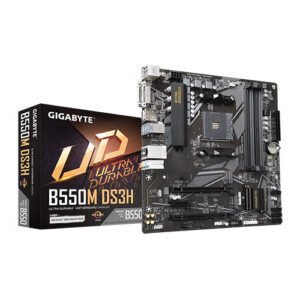
Photo from DynaQuest PC
The motherboard is the backbone of the computer, in which it connects and communicates all of the components in the computer by exchanging data and instructions between the CPU, RAM, storage, and other peripherals. It provides physical connections via sockets and slots for the processor, RAM, storage devices, and expansion cards, as well as ports and jacks for peripherals such as keyboard, mouse, ethernet, and headphones. This board, along with the components connected to it, are powered from the power supply that’s connected to it.
Every motherboard is built different. What to consider when buying the motherboard is the socket type (whether that would be AM4 or AM5 for AMD Ryzen processors, or LGA1700 or LGA1851 for Intel processors), chipset (either the A, B or Z series of chipsets for AMD’s AM4 or AM5 processors, or H, B or Z series of chipsets for Intel’s LGA1700 or LGA1851 processors), form factor (either if it’s micro-ATX, ATX, or mini-ITX), the number of RAM slots (either if it’s DDR4 or DDR5), PCIe expansion slots, and storage connectors (whether that’s SATA or NVMe), features (such as an RGB controller or built-in Wi-Fi connectivity), and lastly, the budget.
As much as possible, try to find a motherboard with a B-series chipset (either a B550 or B650 for AMD’s processors, or a B660 or B860 for Intel’s processors) with a decent or good set of features that you like (such as built-in Wi-Fi, ARGB support for RGB components/peripherals that are controllable via software, and good audio quality) and VRMs that are decent or good.
CPU Cooler
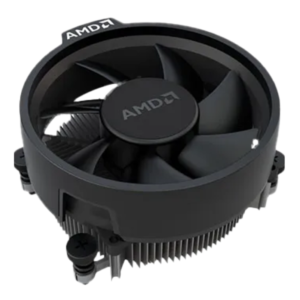
Photo from PC Worth
A CPU cooler is a component for your computer that cools your processor by removing heat in order to maintain its performance and prevent overheating. It works by absorbing heat generated by the processor through heat dissipation.
There are three types of CPU coolers. There’s the air cooler (which uses a combination of a heatsink and fan to dissipate heat from a CPU), the AIO cooler (which feature a water block, pump, and radiator that transfers heat away from the CPU), and lastly the custom liquid cooling loop (which are more complex than the former two and it involves building a loop with a pump, water block, radiator, and tubing in order to get the best performance, but requires the skills and technical expertise to install them).
If you’re getting a CPU cooler, try to consider finding a cooler that’s compatible with your processor’s socket (such as AM4 or AM5, or LGA1700 or LGA1851) and matches or exceeds your CPU’s thermal design power (TDP). For processors that are 65W or below, such as an AMD Ryzen 5 or an Intel Core i7, an air cooler is sufficient enough to cool those processors. However, if you have a high-end processor, such as an AMD Ryzen 7 or an Intel Core i7 and above, you could try to invest in an all-in-one (AIO) cooler.
RAM
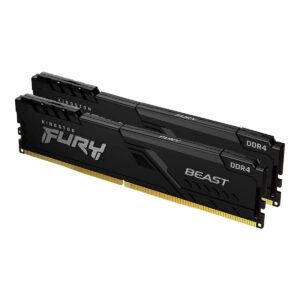
Photo from Datablitz
RAM, or random-access memory, provides short-term memory to the computer in which the CPU needs to access it quickly while the computer is turned on. It is a volatile form of memory, because when the computer turns off, the data on the RAM is lost. Random-access memory holds as a temporary storage that can be accessed by the processor, which it can read much faster than a storage device, such as an SSD or a hard drive.
Typically, RAM comes in a form of a flat, rectangular circuit board with memory chips attached as RAM modules. These modules are available to purchase either as an individual stick or as a pair in the form of a kit (such as two 8GB DDR4 RAM sticks or two 16GB DDR4 RAM sticks).
When buying a RAM kit, you have to make sure that the RAM you’ve purchased is compatible with your motherboard, as today’s RAM sticks or kits are designed to only work with motherboards that either have a DDR4 or DDR5 RAM slots. Furthermore, you should also check your motherboard’s manual on what’s the maximum supported RAM capacity and RAM speed based on the processor you have. Make sure that the RAM you choose have a low CAS latency, such as CL16 or lower, and that you should try to get the memory timings right. The best sweet spot for RAM speed would be at least 3600MT/s for DDR4 and 6000MT/s for DDR5.
Storage
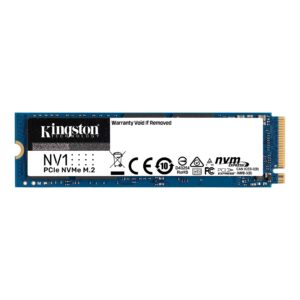
Photo from Benson Computers
Your internal storage in your computer can store data in long-term (such as your your operating system, applications, and files), which it comes in at least two forms, a solid-state drive (also known as an SSD) and hard disk drive. An SSD is faster than a traditional hard disk drive, as it has no moving parts and uses flash memory for storage. On the other hand, a hard disk drive uses magnetic disks or platters in order to store data, which they’re accessed by a read/write head that moves across the platters to read and write data. Whereas solid-state drives can be connected to either via an M.2 slot or SATA port (if the SSD can only be connected via SATA), hard disk drives can only be connected via SATA.
With solid-state drives already becoming the norm for new computers since the end of the 2010s to early 2020s, getting an SSD is a must, as they’re already starting to get cheaper and that they’re obviously faster than a hard drive in terms of read and write speeds. Whether you’re using an NVMe or SATA SSD, the faster read and write speed will make your PC responsive and snappy. As much as possible, only get a hard drive if you want to store files that you don’t use often or use it to store assets for your creative works.
When finding an SSD, try to find one that’s NVMe at any capacity you need (such as 1TB or more). Consider finding an SSD with a read and write speed that’s sufficient for your needs or use, as well as try to find an SSD that has DRAM when possible. If possible, you should also consider the SSD’s endurance as well if you’re trying to do heavy tasks or workloads on your computer.
For more information, you can try to look at a Google Sheets document regarding a tier list for SSDs.
Graphics Card
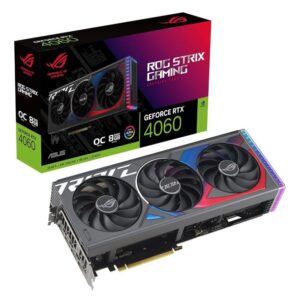
Photo from Game One PH
The graphics card or GPU is considered to be the second most important part in any computer. These cards are plugged into the first PCI Express slot in the motherboard and not only that it’s capable of displaying the output from your PC to your monitor, but also capable to render images, videos, and 3D graphics in real-time. It’s an essential component if you want to play games, edit photos or videos, render 3D models, or do any graphically demanding tasks.
There are three companies that currently makes dedicated graphics cards for desktop computers, which include AMD, Nvidia, and Intel. AMD has its own Radeon RX lineup of GPUs, whereas Nvidia has its own GeForce RTX lineup of graphics cards. More recently, Intel began making its own dedicated graphics cards with the launch of its Intel Arc lineup of GPUs in 2022 with the Arc A-Series.
Currently, the graphics cards market (particularly when it comes to Nvidia’s GPUs) has been stagnated recently since the launch of its GeForce RTX 40 Series GPUs (as well as the launch of the 50 Series), mainly due to a lack of improvement in performance, 8GB video memory on the 4060 and 4060 Ti (as well as the recently launched 5060 and 5060 Ti) graphics cards, the use of frame generation and DLSS AI upscaling, and an increase in GPU prices.
Now, if you’re planning to get a graphics card for your PC build in 2025 (specifically for gaming), please consider avoiding Nvidia GPUs when possible (unless if you’re planning to do content creation). Instead, try to buy an AMD graphics card such as a Radeon RX 6600 or 7700XT, as these graphics cards provide the best value for money than Nvidia’s GPUs (with the latter GPU allowing you to play at 1440p Ultra settings, as it has 12GB of video memory, which is enough to game at that resolution).
Power Supply
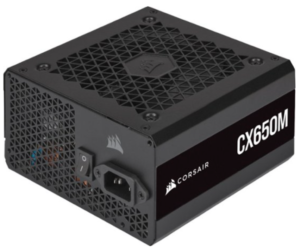
Photo from IGN
The power supply delivers power to all the components in your PC build. It’s one of the crucial parts to install in your computer as you won’t be to use your computer without it. Depending on the type of PSU, it connects to the components via a set of power cables that are either attached to the power supply or can be dethatched or reattached. These cables are necessary to power the motherboard, processor, SATA devices, graphics cards, and many other components that require such cables.
When buying a power supply, remember to not cheap out on it, as the PSU can cause problems to other components if it’s not good or reliable enough. You should consider finding a power supply based on the wattage that you need from the parts you have chosen and the brand and model, as well as if you want a PSU that’s either non-modular, semi-modular or modular. You can visit this Google Sheets document of a PSU Tier List from SPL by pressing Ctrl/Command+F and searching the brand, model and wattage of the power supply you want to buy to see if it’s good enough. A C-tier power supply would do a decent job, but a B or even an A-tier PSU would be much better.
Case
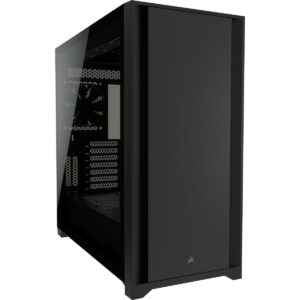
Photo from Datablitz
Now the last component for your computer is the case. This part houses and protects your components that made your computer. Every case is made different in terms of form factor, appearance, size, the layout and number of drive bays and case fans, front header connections, and a few others.
What you need to consider when buying a case is that you need to know if the case is compatible with your motherboard’s form factor, airflow, size, aesthetics, and cable management.
Now, while you can buy a case based on your aesthetic and size preferences (like for example, you could go with a Fractal Design North for that woodgrain look or a Hyte Revolt 3 for a small form factor gaming PC), try not to overspend your budget on an expensive case (such as an O11 Dynamic or a HYTE Y70) unless if you know what you’re doing.
Peripherals
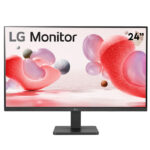
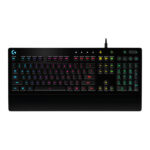
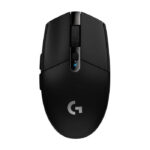
Photos from Datablitz
Peripherals are external input and output devices that are connected to your PC via the ports of the motherboard, whether that would be USB, DisplayPort, HDMI, the 3.5mm headphone and microphone jacks, or any other input or output ports. These devices allow you to interact with your computer. These devices include keyboard, mouse, monitor, external storage devices, and many others.
Now, choosing peripherals can depend on your budget and use case. Some peripherals may enhance your experience, such as a mechanical keyboard, a gaming mouse and a high refresh rate monitor, as well as a gaming headset.